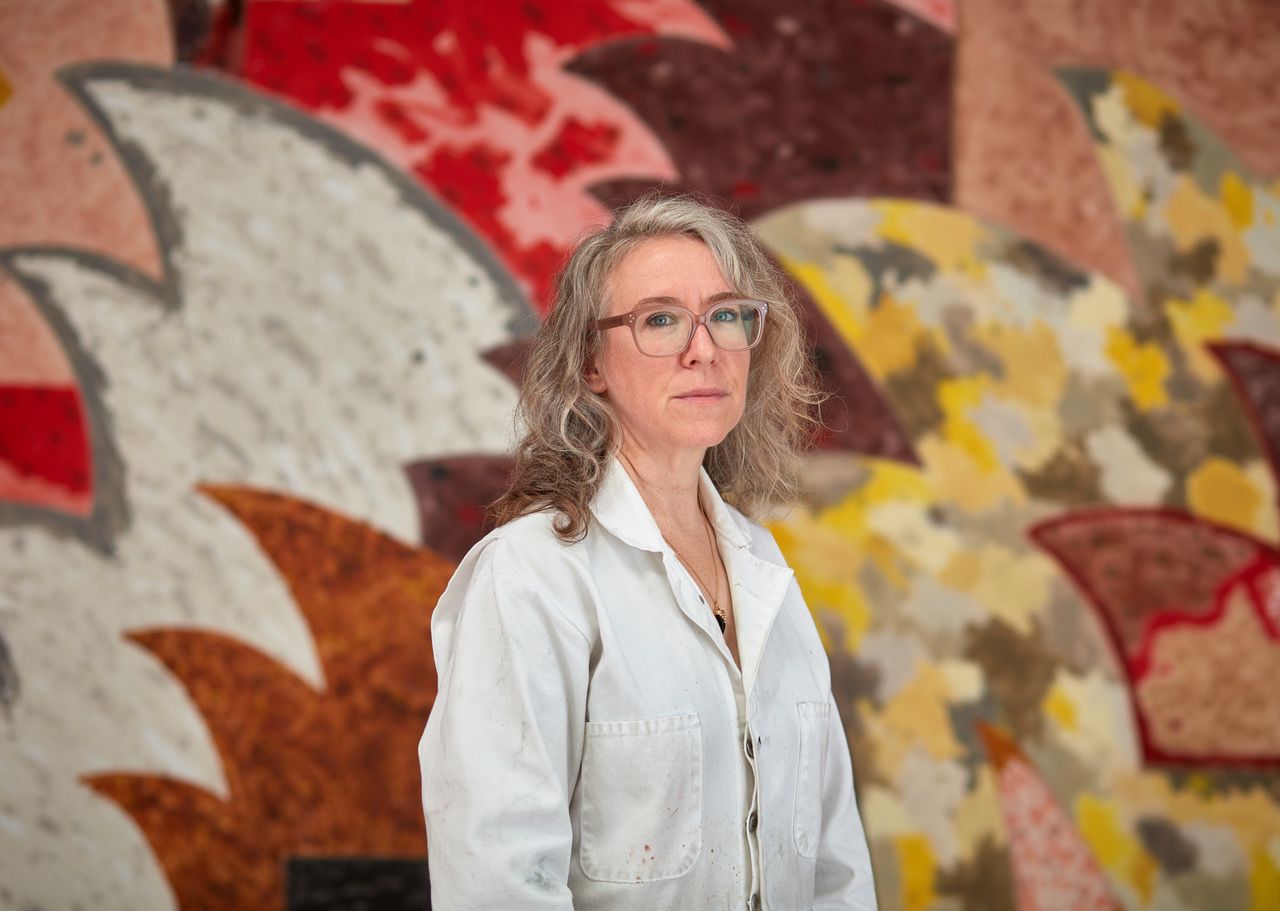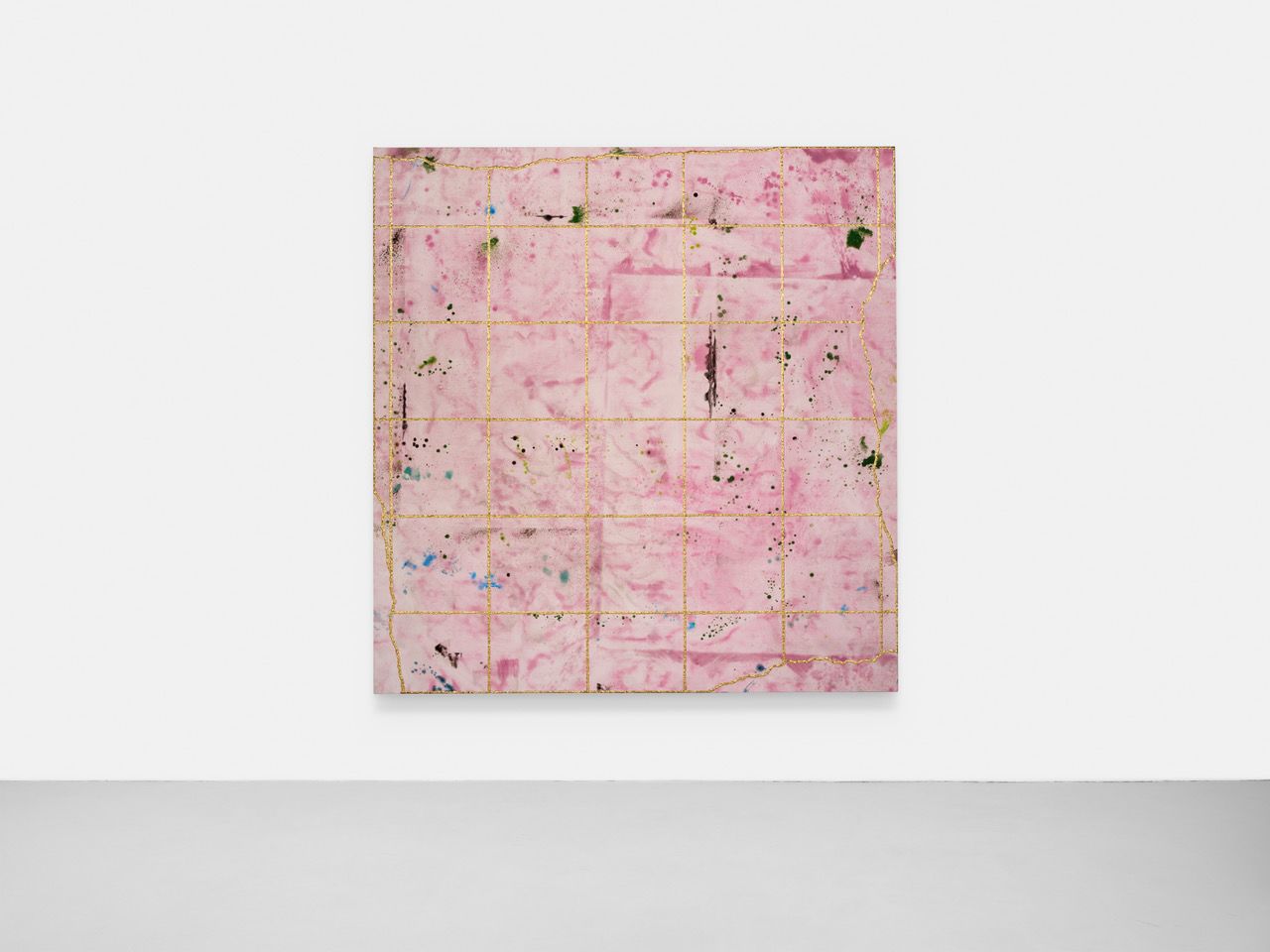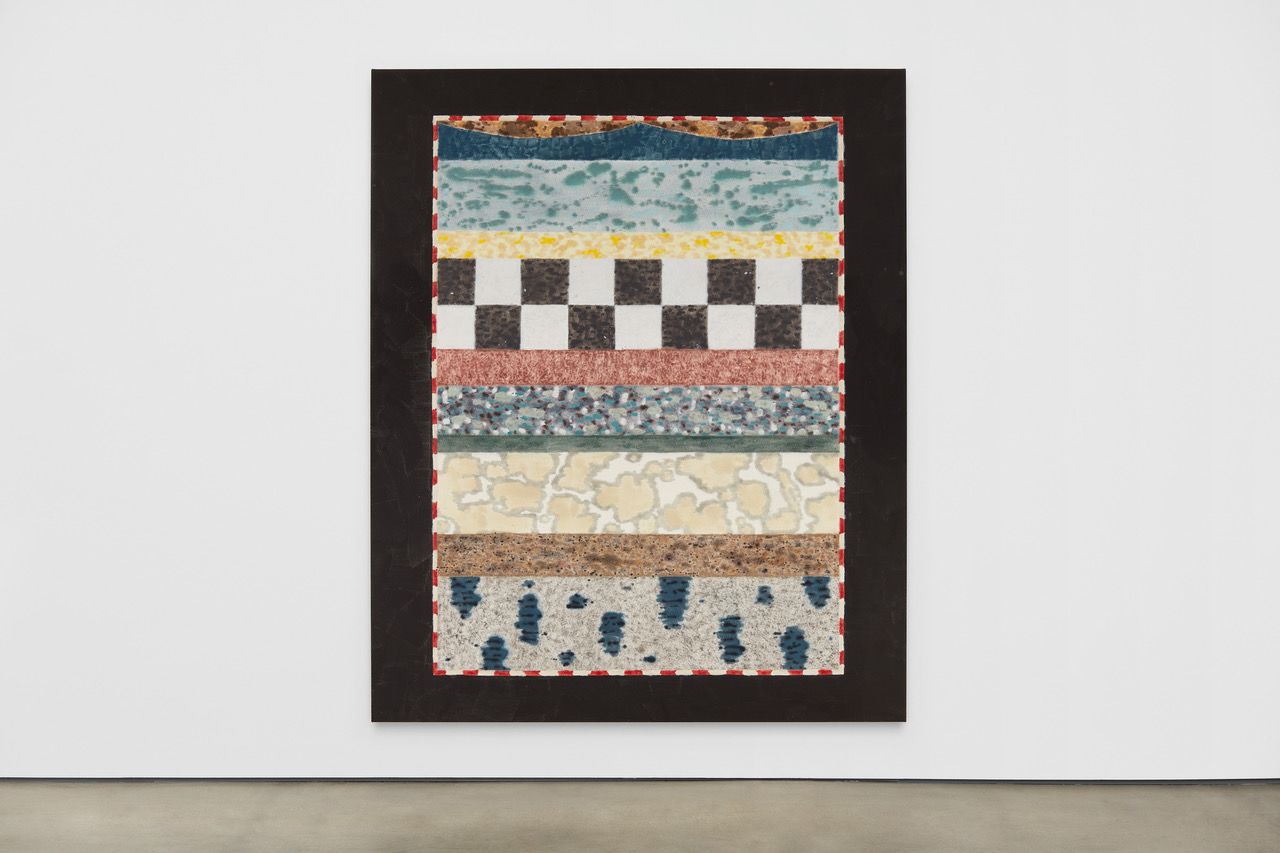Q&A with Rebecca Morris
Visiting Artists Program
Distinguished Alumni Lecturer

by Ben Kim Paplham (MFA 2021)
When Rebecca Morris (Post-Bacc 1992, MFA 1994) entered the School of the Art Institute of Chicago’s (SAIC) Painting and Drawing program, she was an observational realist painter.
By graduation, she’d discovered a new abstract language. This past year, the Institute of Contemporary Art, Los Angeles (ICA) presented Morris’s work in a 21-year survey exhibition curated by Jamillah James. That same exhibition travels to the Museum of Contemporary Art Chicago (MCA) this fall, just as Morris returns to SAIC as a Distinguished Alumni Lecturer as part of the School’s Visiting Artist Program. Acknowledging this major occasion, we caught up with Morris to discuss the exhibition and her work.

Rebecca Morris, Untitled (#07-16), 2016, oil on canvas, 85 x 101 inches. Photo: Flying Studio. Courtesy of Regen Projects, Los Angeles.
Rebecca Morris, Untitled (#07-16), 2016, oil on canvas, 85 x 101 inches. Photo: Flying Studio. Courtesy of Regen Projects, Los Angeles.
What connections do you see between your work now and your time at SAIC?
When I came out of undergrad I was a realist painter, I was arranging small still lives of various things I had collected that were quirky or uncanny. At SAIC I was slowly figuring out my way toward abstraction, and in my final year of the MFA program I had this epiphany that realistic painting wasn’t the way I wanted to communicate. It had just been the way I had been taught to paint. So, I started to find a language and style in painting that felt more mine. When I look back at the work I did as a grad student, I completely see how it’s connected to what I’m doing now. I’m still doing things on the edges of paintings and borders, etc.

Installation view of Rebecca Morris, The Ache of Bright, Blaffer Art Museum, Houston, Texas, January 11–March 16, 2019. Photo: Jeff McLane/ICA LA. Courtesy of Regen Projects, Los Angeles.
Installation view of Rebecca Morris, The Ache of Bright, Blaffer Art Museum, Houston, Texas, January 11–March 16, 2019. Photo: Jeff McLane/ICA LA. Courtesy of Regen Projects, Los Angeles.
What shifted you to focus on abstraction?
It was my own internal switch. I’d be working on the paintings and finding that the language of representation became—looking, painting, looking, painting—and it just started feeling like a job. I loved the painting part. I loved the color mixing, the movement of the paint, but having to look at something physical to be able to make a painting of it, it was kind of like a trap, because what if I wanted to paint something I couldn’t see? But then the question was, what is the thing to paint if I can’t see it? So I tried lots of different kinds of paintings. I was trying to think about what I wanted a painting to do, how did I want to make it, and how did I want to feel making a painting?

Installation view of Rebecca Morris: 2001–2022, Institute of Contemporary Art, Los Angeles, California, October 1, 2022–January 15, 2023. Photo: Jeff McLane/ICA LA. Courtesy of Regen Projects, Los Angeles.
Installation view of Rebecca Morris: 2001–2022, Institute of Contemporary Art, Los Angeles, California, October 1, 2022–January 15, 2023. Photo: Jeff McLane/ICA LA. Courtesy of Regen Projects, Los Angeles.
Is that feeling related to your use of large canvas sizes?
The paintings that I make—some are 10 feet, 11 feet, one in the show even taller than that, very narrow and tall—are super exciting to make because the stakes are high and I have to recalibrate each time I do a painting that’s so much beyond a human scale. Working on something that’s 128 by 114 inches really stretches me and makes me have to reach, and I have to readjust my whole sense of proportion to these different planes of space. In my studio I try to have multiple sized canvases happening simultaneously because it keeps me fresh and curious and thwarts complacency.
What I love about a particularly large scale is how it can create a gestalt or a feeling of awe. But I am also trying to create something in a very large scale that has a sense of intimacy to it. And I think that’s a really unique challenge. By intimacy, I mean that in a really wide idea of what intimacy is. It could mean comforting, that the scale is connecting you to a primordial, larger power.

Rebecca Morris, Untitled (#14-21), 2021, oil and spray paint on canvas, 95 x 91 inches.Photo: Flying Studio. Courtesy of Regen Projects, Los Angeles.
Rebecca Morris, Untitled (#14-21), 2021, oil and spray paint on canvas, 95 x 91 inches.Photo: Flying Studio. Courtesy of Regen Projects, Los Angeles.
What discoveries did you make from your exhibition for the ICA in Los Angeles or while organizing the one for the MCA in Chicago?
One of the things Jamillah and I were trying to do was track my work, not so much in terms of a linear or chronological order but more through experimentation and cross-fertilization. We installed the show anti-chronologically—through pairings and groups, bodies of work across time, to highlight discoveries that got repeated in later years. To focus on certain repetitions or themes that would ultimately be interesting to me as an artist by seeing all this work come back together.
To have your work of over 20 years in one place, you start noticing different things because these works did not overlap in the studio at the same time and you haven’t seen some of this work in a very long time. To do a survey show arranged chronologically, and it’s kind of dramatic to say this, but it felt like it would be a kind of artistic doom to have it all lined up like that. It’s not how I think as a painter and an artist. I’m always thinking between things and against categories and I’m trying to create levels of resistance in my work. So resisting the chronological order of the show was really important, and instead to focus on how they relate together in alternative ways. ■

Rebecca Morris, Untitled (#11-18), 2018, oil on canvas, 104 x 85 inches. Photo: Jeff McLane/ICA LA. Courtesy of Regen Projects, Los Angeles.
Rebecca Morris, Untitled (#11-18), 2018, oil on canvas, 104 x 85 inches. Photo: Jeff McLane/ICA LA. Courtesy of Regen Projects, Los Angeles.
